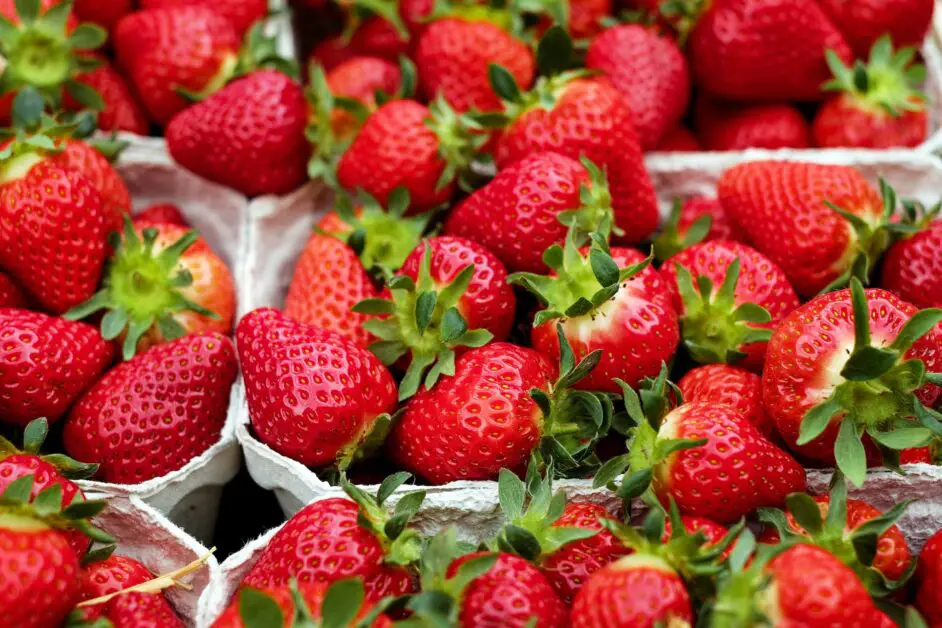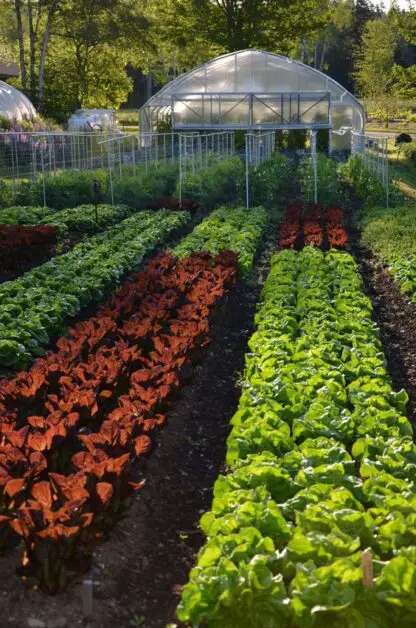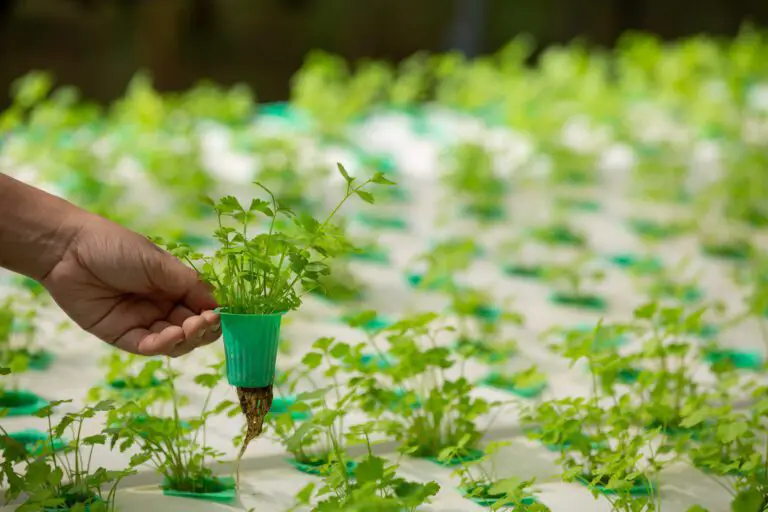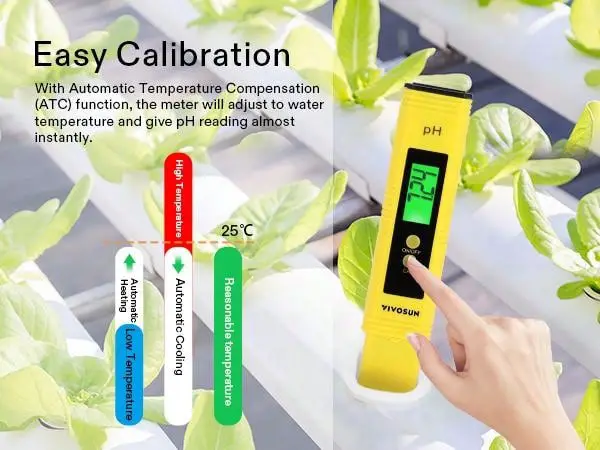Identifying and Treating Nutrient Deficiencies in Hydroponic Strawberries
Table of Contents
Introduction of Nutrient Deficiencies in Hydroponic Strawberries
Strawberries are a delicious and nutritious fruit that can be grown in a soil-less system, using water and nutrients, known as hydroponics. Hydroponic strawberries have many advantages over soil-grown strawberries, such as better quality, higher yield, lower cost, and lower environmental impact. However, hydroponic strawberries also require careful monitoring and management of the nutrient solution, as any imbalance or deficiency can affect the health and productivity of the plants. In this blog, we will discuss how to identify and treat the most common nutrient deficiencies in hydroponic strawberries, and how to prevent them from occurring in the first place.
What are Nutrient Deficiencies?
Nutrient deficiencies are the lack or the insufficiency of one or more essential nutrients that the plants need for their growth and development. Nutrients are classified into two groups: macronutrients and micronutrients. Macronutrients are the nutrients that plants need in large amounts, such as nitrogen, phosphorus, potassium, calcium, magnesium, and sulfur. Micronutrients are the nutrients that plants need in small amounts, such as iron, zinc, manganese, boron, copper, molybdenum, and chlorine.
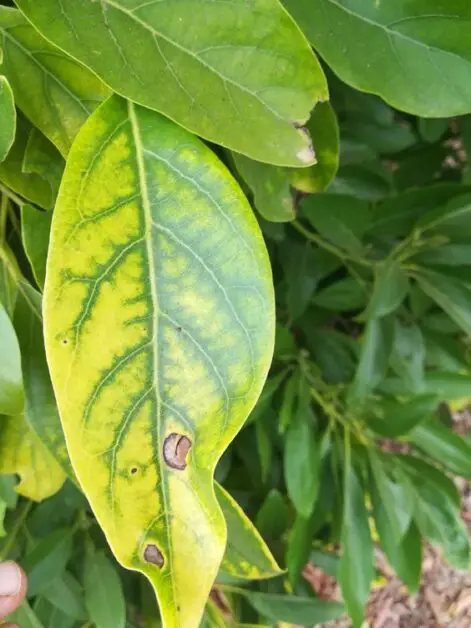
Nutrient deficiencies can occur due to various reasons, such as:
- Low concentration or availability of the nutrient in the solution
- High concentration or competition of other nutrients in the solution
- Incorrect pH or EC (electrical conductivity) of the solution
- Poor quality or contaminated water or nutrients
- Environmental stress factors, such as temperature, light, humidity, or pests
- Genetic or physiological factors of the plant
Nutrient deficiencies can cause various symptoms and problems in the plants, such as:
- Reduced growth and yield
- Chlorosis (yellowing) or necrosis (browning) of the leaves
- Curling, wilting, or dropping of the leaves
- Stunting, deformation, or cracking of the stems, flowers, or fruits
- Reduced flavor, quality, or shelf life of the fruits
- Increased susceptibility to diseases or pests
Nutrient deficiencies can be diagnosed by observing the symptoms and the patterns of the plants, and by testing the nutrient solution and the plant tissue. However, it is important to note that some symptoms may be similar or overlapping for different nutrient deficiencies and that some symptoms may be caused by other factors, such as diseases, pests, or environmental stress. Therefore, it is advisable to consult a professional or a reliable source before applying any corrective measures.
How to Treat Nutrient Deficiencies?
Nutrient deficiencies can be treated by adjusting the nutrient solution, the growing medium, or the environmental conditions, depending on the type and the severity of the deficiency. Some of the general methods are:
- Increasing or decreasing the concentration or the ratio of the nutrient in the solution
- Adding or removing other nutrients that may affect the availability or the uptake of the nutrient in the solution
- Adjusting the pH or the EC of the solution to the optimal range for the nutrient in the solution
- Changing the water or the nutrients to a better quality or a different source
- Flushing the system with fresh water or a balanced nutrient solution to remove any excess or unwanted nutrients or contaminants
- Applying foliar sprays or soil drenches of the nutrient or a chelated form of the nutrient to the plant
- Pruning or removing any damaged or infected plant parts to reduce the stress and the spread of the deficiency
- Modifying the temperature, the light, the humidity, or the ventilation to improve the growth and the metabolism of the plant
However, it is important to follow the label instructions and the safety precautions, and to apply the appropriate amount and frequency of the treatment, to avoid overcorrection or toxicity. It is also important to monitor and evaluate the results of the treatment and to make any necessary adjustments or changes.
How to Prevent Nutrient Deficiencies?
Nutrient deficiencies can be prevented by maintaining a balanced and complete nutrient solution, and by monitoring and managing the nutrient solution and the environmental conditions regularly. Some of the general tips are:
- Use a high-quality and suitable nutrient solution for hydroponic strawberries, and follow the recommended dosage and schedule
- Check and adjust the pH and the EC of the nutrient solution daily, using a pH meter and an EC meter, and keep them within the optimal range for hydroponic strawberries, which is 5.5 to 6.5 for pH and 1.2 to 1.8 mS/cm for EC.
- Change the nutrient solution every two weeks, or as needed, to prevent any buildup or depletion of nutrients
- Use a clean and sterile water and nutrient source, and avoid any contamination or pollution of the system
- Use a suitable and well-drained growing medium, such as perlite, vermiculite, or coco coir, that does not retain excess water or affect the nutrient availability
- Provide adequate and appropriate light, temperature, humidity, and ventilation for hydroponic strawberries, and avoid any extreme or fluctuating conditions
- Keep the plants healthy and stress-free, and avoid any overwatering, overfeeding, overcrowding, or pruning
- Inspect the plants and the system regularly, and identify and treat any signs of nutrient deficiencies or other problems as soon as possible
The Most Common Nutrient Deficiencies in Hydroponic Strawberries
In this section, we will discuss the most common nutrient deficiencies in hydroponic strawberries, their symptoms, causes, and treatments. We will also provide some pictures and references for further information.
Nitrogen Deficiency
Nitrogen is a macronutrient that is essential for the synthesis of proteins, chlorophyll, and enzymes in the plant. It is involved in the growth, the development, and the metabolism of the plant. Nitrogen deficiency is one of the most common and most severe nutrient deficiencies in hydroponic strawberries, as strawberries have a high demand for nitrogen, especially during the vegetative and flowering stages.
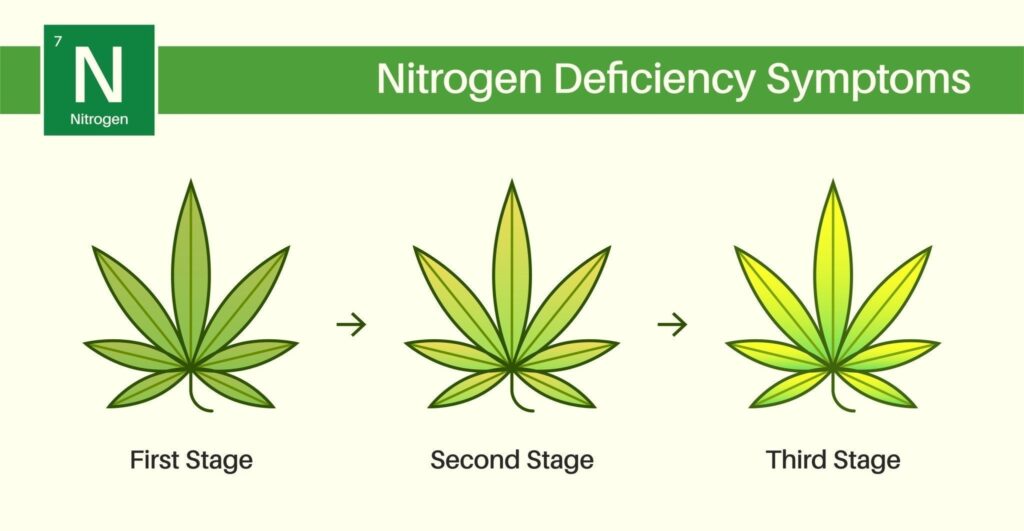
Symptoms of nitrogen deficiency
Nitrogen deficiency causes the leaves to turn pale green or yellow, starting from the older leaves and moving to the younger leaves. The leaves may also become smaller, thinner, and brittle, and may curl, wilt, or drop off. The stems may become weak, thin, and short, and the flowers and the fruits may become fewer, smaller, and less flavorful. The overall growth and yield of the plant may be reduced.
Causes of nitrogen deficiency
Nitrogen deficiency can be caused by:
- Low concentration or availability of nitrogen in the solution
- High concentration or competition of other nutrients, such as potassium, calcium, or magnesium, in the solution
- Low pH or high EC of the solution
- Poor quality or contaminated water or nutrients
- High temperature or low light conditions
- Excessive pruning or harvesting of the plant
Treatment of nitrogen deficiency
Nitrogen deficiency can be treated by:
- Increasing the concentration or the ratio of nitrogen in the solution, or adding a nitrogen-rich fertilizer, such as ammonium nitrate, calcium nitrate, or urea, to the solution
- Decreasing the concentration or the ratio of other nutrients, such as potassium, calcium, or magnesium, in the solution, or using a balanced and complete nutrient solution for hydroponic strawberries
- Adjusting the pH or the EC of the solution to the optimal range for hydroponic strawberries, which is 5.5 to 6.5 for pH and 1.2 to 1.8 mS/cm for EC
- Changing the water or the nutrients to a better quality or a different source, and flushing the system with fresh water or a balanced nutrient solution to remove any excess or unwanted nutrients or contaminants
- Applying foliar sprays or soil drenches of nitrogen or a chelated form of nitrogen, such as urea or ammonium sulfate, to the plant
- Pruning or removing any damaged or infected plant parts to reduce the stress and the spread of the deficiency
- Modifying the temperature or the light to improve the growth and the metabolism of the plant
However, it is important to follow the label instructions and the safety precautions, and to apply the appropriate amount and frequency of the treatment, to avoid overcorrection or toxicity. It is also important to monitor and evaluate the results of the treatment and to make any necessary adjustments or changes.
Phosphorus Deficiency
Phosphorus is a macronutrient that is essential for the synthesis of nucleic acids, phospholipids, and ATP in the plant. It is involved in the energy transfer, the cell division, and the root development of the plant. Phosphorus deficiency is a common nutrient deficiency in hydroponic strawberries, as strawberries have a high demand for phosphorus, especially during the flowering and fruiting stages.

Symptoms of phosphorus deficiency
Phosphorus deficiency causes the leaves to turn dark green or purple, starting from the older leaves and moving to the younger leaves. The leaves may also become smaller, thicker, and leathery, and may curl, wilt, or drop off. The stems may become reddish or purple, and the flowers and the fruits may become fewer, smaller, and less flavorful. The overall growth and yield of the plant may be reduced.
Causes of phosphorus deficiency
Phosphorus deficiency can be caused by:
- Low concentration or availability of phosphorus in the solution
- High concentration or competition of other nutrients, such as calcium, iron, or zinc, in the solution
- High pH or low EC of the solution
- Poor quality or contaminated water or nutrients
- Low temperature or high light conditions
- Excessive pruning or harvesting of the plant
Treatment of phosphorus deficiency
Phosphorus deficiency can be treated by:
- Increasing the concentration or the ratio of phosphorus in the solution, or adding a phosphorus-rich fertilizer, such as monopotassium phosphate, diammonium phosphate, or superphosphate, to the solution
- Decreasing the concentration or the ratio of other nutrients, such as calcium, iron, or zinc, in the solution, or using a balanced and complete nutrient solution for hydroponic strawberries
- Adjusting the pH or the EC of the solution to the optimal range for hydroponic strawberries, which is 5.5 to 6.5 for pH and 1.2 to 1.8 mS/cm for EC
- Changing the water or the nutrients to a better quality or a different source, and flushing the system with fresh water or a balanced nutrient solution to remove any excess or unwanted nutrients or contaminants
- Applying foliar sprays or soil drenches of phosphorus or a chelated form of phosphorus, such as phosphoric acid or potassium phosphate, to the plant
- Pruning or removing any damaged or infected plant parts to reduce the stress and the spread of the deficiency
- Modifying the temperature or the light to improve the growth and the metabolism of the plant
However, it is important to follow the label instructions and the safety precautions, and to apply the appropriate amount and frequency of the treatment, to avoid overcorrection or toxicity. It is also important to monitor and evaluate the results of the treatment and to make any necessary adjustments or changes.
Potassium Deficiency
Potassium is a macronutrient that is essential for the activation of enzymes, the regulation of water and nutrient transport, and the maintenance of osmotic pressure in the plant. It is involved in the photosynthesis, the respiration, and the transpiration of the plant. Potassium deficiency is a common nutrient deficiency in hydroponic strawberries, as strawberries have a high demand for potassium, especially during the fruiting and ripening stages.

Symptoms of potassium deficiency
Potassium deficiency causes the leaves to turn yellow or brown, starting from the edges and moving to the center. The leaves may also become dry, brittle, and scorched, and may curl, wilt, or drop off. The stems may become weak, thin, and short, and the flowers and the fruits may become fewer, smaller, and less flavorful. The overall growth and yield of the plant may be reduced.
Causes of potassium deficiency
Potassium deficiency can be caused by:
- Low concentration or availability of potassium in the solution
- High concentration or competition of other nutrients, such as nitrogen, calcium, or magnesium, in the solution
- Low pH or high EC of the solution
- Poor quality or contaminated water or nutrients
- High temperature or low humidity conditions
- Excessive pruning or harvesting of the plant
Treatment of potassium deficiency
Potassium deficiency can be treated by:
- Increasing the concentration or the ratio of potassium in the solution, or adding a potassium-rich fertilizer, such as potassium nitrate, potassium sulfate, or potassium chloride, to the solution
- Decreasing the concentration or the ratio of other nutrients, such as nitrogen, calcium, or magnesium, in the solution, or using a balanced and complete nutrient solution for hydroponic strawberries
- Adjusting the pH or the EC of the solution to the optimal range for hydroponic strawberries, which is 5.5 to 6.5 for pH and 1.2 to 1.8 mS/cm for EC
- Changing the water or the nutrients to a better quality or a different source, and flushing the system with fresh water or a balanced nutrient solution to remove any excess or unwanted nutrients or contaminants
- Applying foliar sprays or soil drenches of potassium or a chelated form of potassium, such as potassium hydroxide or potassium citrate, to the plant
- Pruning or removing any damaged or infected plant parts to reduce the stress and the spread of the deficiency
- Modifying the temperature or the humidity to improve the growth and the metabolism of the plant
However, it is important to follow the label instructions and the safety precautions, and to apply the appropriate amount and frequency of the treatment, to avoid overcorrection or toxicity. It is also important to monitor and evaluate the results of the treatment and to make any necessary adjustments or changes.
Calcium Deficiency
Calcium is a macronutrient that is essential for the formation and stability of cell walls and membranes in the plant. It is involved in the cell division, the cell elongation, and the signal transduction of the plant. Calcium deficiency is a common nutrient deficiency in hydroponic strawberries, as strawberries have a high demand for calcium, especially during the fruiting and ripening stages.

Symptoms of calcium deficiency
Calcium deficiency causes the leaves to turn yellow or brown, starting from the tips and moving to the base. The leaves may also become distorted, crinkled, and necrotic, and may curl, wilt, or drop off. The stems may become weak, thin, and short, and the flowers and the fruits may become fewer, smaller, and less flavorful. The fruits may also develop a disorder called blossom end rot, which is a dark, sunken, and rotten spot on the bottom of the fruit. The overall growth and yield of the plant may be reduced.
Causes of calcium deficiency
Calcium deficiency can be caused by:
- Low concentration or availability of calcium in the solution
- High concentration or competition of other nutrients, such as nitrogen, phosphorus, or potassium, in the solution
- High pH or low EC of the solution
- Poor quality or contaminated water or nutrients
- Low temperature or low light conditions
- Excessive watering or drought stress of the plant
Treatment of calcium deficiency
Calcium deficiency can be treated by:
- Increasing the concentration or the ratio of calcium in the solution, or adding a calcium-rich fertilizer, such as calcium nitrate, calcium sulfate, or calcium chloride, to the solution
- Decreasing the concentration or the ratio of other nutrients, such as nitrogen, phosphorus, or potassium, in the solution, or using a balanced and complete nutrient solution for hydroponic strawberries
- Adjusting the pH or the EC of the solution to the optimal range for hydroponic strawberries, which is 5.5 to 6.5 for pH and 1.2 to 1.8 mS/cm for EC
- Changing the water or the nutrients to a better quality or a different source, and flushing the system with fresh water or a balanced nutrient solution to remove any excess or unwanted nutrients or contaminants
- Applying foliar sprays or soil drenches of calcium or a chelated form of calcium, such as calcium carbonate or calcium EDTA, to the plant
- Pruning or removing any damaged or infected plant parts to reduce the stress and the spread of the deficiency
- Modifying the temperature or the light to improve the growth and the metabolism of the plant
However, it is important to follow the label instructions and the safety precautions, and to apply the appropriate amount and frequency of the treatment, to avoid overcorrection or toxicity. It is also important to monitor and evaluate the results of the treatment and to make any necessary adjustments or changes.
Magnesium Deficiency
Magnesium is a macronutrient that is essential for the synthesis and function of chlorophyll in the plant. It is involved in the photosynthesis, the respiration, and the enzyme activation of the plant. Magnesium deficiency is a common nutrient deficiency in hydroponic strawberries, as strawberries have a high demand for magnesium, especially during the fruiting and ripening stages.
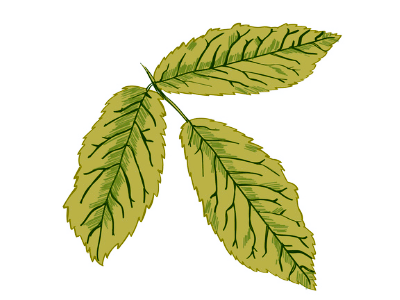
Symptoms of magnesium deficiency
Magnesium deficiency causes the leaves to turn yellow or brown, starting from the edges and moving to the veins. The leaves may also become dry, brittle, and necrotic, and may curl, wilt, or drop off. The stems may become weak, thin, and short, and the flowers and the fruits may become fewer, smaller, and less flavorful. The overall growth and yield of the plant may be reduced.
Causes of magnesium deficiency
Magnesium deficiency can be caused by:
- Low concentration or availability of magnesium in the solution
- High concentration or competition of other nutrients, such as calcium, potassium, or sodium, in the solution
- Low pH or high EC of the solution
- Poor quality or contaminated water or nutrients
Sulfur Deficiency
Sulfur is a macronutrient that is essential for the synthesis of amino acids, proteins, and vitamins in the plant. It is involved in the flavor, the aroma, and the color of the plant. Sulfur deficiency is a rare nutrient deficiency in hydroponic strawberries, as strawberries have a low demand for sulfur, and most water and nutrient sources contain sufficient amounts of sulfur.
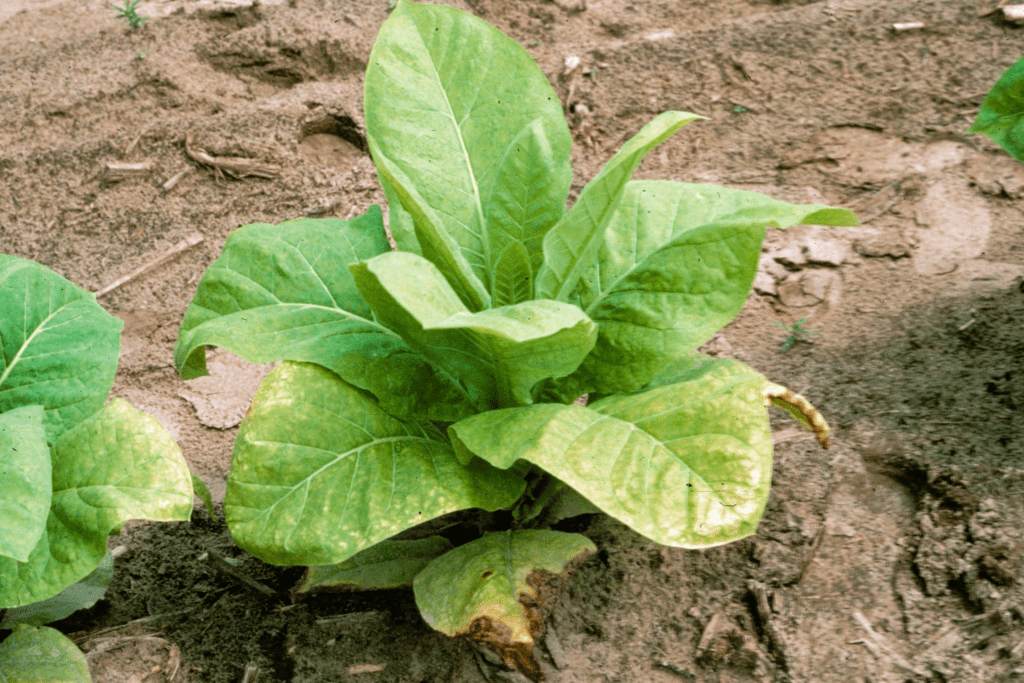
Symptoms of sulfur deficiency
Sulfur deficiency causes the leaves to turn pale green or yellow, starting from the younger leaves and moving to the older leaves. The leaves may also become smaller, thinner, and brittle, and may curl, wilt, or drop off. The stems may become weak, thin, and short, and the flowers and the fruits may become fewer, smaller, and less flavorful. The overall growth and yield of the plant may be reduced.
Causes of sulfur deficiency
Sulfur deficiency can be caused by:
- Low concentration or availability of sulfur in the solution
- High concentration or competition of other nutrients, such as nitrogen, phosphorus, or potassium, in the solution
- High pH or low EC of the solution
- Poor quality or contaminated water or nutrients
- Low temperature or high humidity conditions
- Excessive watering or leaching of the plant
Treatment of sulfur deficiency
Sulfur deficiency can be treated by:
- Increasing the concentration or the ratio of sulfur in the solution, or adding a sulfur-rich fertilizer, such as magnesium sulfate, potassium sulfate, or ammonium sulfate, to the solution
- Decreasing the concentration or the ratio of other nutrients, such as nitrogen, phosphorus, or potassium, in the solution, or using a balanced and complete nutrient solution for hydroponic strawberries
- Adjusting the pH or the EC of the solution to the optimal range for hydroponic strawberries, which is 5.5 to 6.5 for pH and 1.2 to 1.8 mS/cm for EC
- Changing the water or the nutrients to a better quality or a different source, and flushing the system with fresh water or a balanced nutrient solution to remove any excess or unwanted nutrients or contaminants
- Applying foliar sprays or soil drenches of sulfur or a chelated form of sulfur, such as sulfuric acid or sodium thiosulfate, to the plant
- Pruning or removing any damaged or infected plant parts to reduce the stress and the spread of the deficiency
- Modifying the temperature or the humidity to improve the growth and the metabolism of the plant
However, it is important to follow the label instructions and the safety precautions, and to apply the appropriate amount and frequency of the treatment, to avoid overcorrection or toxicity. It is also important to monitor and evaluate the results of the treatment and to make any necessary adjustments or changes.
10 FAQs about nutrient deficiencies in hydroponic strawberries
Q: What are the symptoms of nitrogen deficiency in hydroponic strawberries?
A: Nitrogen deficiency causes the leaves to turn pale green or yellow, starting from the older leaves and moving to the younger leaves. The leaves may also become smaller, thinner, and brittle, and may curl, wilt, or drop off. The stems may become weak, thin, and short, and the flowers and the fruits may become fewer, smaller, and less flavorful. The overall growth and yield of the plant may be reduced.
Q: What are the symptoms of phosphorus deficiency in hydroponic strawberries?
A: Phosphorus deficiency causes the leaves to turn dark green or purple, starting from the older leaves and moving to the younger leaves. The leaves may also become smaller, thicker, and leathery, and may curl, wilt, or drop off. The stems may become reddish or purple, and the flowers and the fruits may become fewer, smaller, and less flavorful. The overall growth and yield of the plant may be reduced.
Q: What are the symptoms of potassium deficiency in hydroponic strawberries?
A: Potassium deficiency causes the leaves to turn yellow or brown, starting from the edges and moving to the center. The leaves may also become dry, brittle, and scorched, and may curl, wilt, or drop off. The stems may become weak, thin, and short, and the flowers and the fruits may become fewer, smaller, and less flavorful. The overall growth and yield of the plant may be reduced.
Q: What are the symptoms of calcium deficiency in hydroponic strawberries?
A: Calcium deficiency causes the leaves to turn yellow or brown, starting from the tips and moving to the base. The leaves may also become distorted, crinkled, and necrotic, and may curl, wilt, or drop off. The stems may become weak, thin, and short, and the flowers and the fruits may become fewer, smaller, and less flavorful. The fruits may also develop a disorder called blossom end rot, which is a dark, sunken, and rotten spot on the bottom of the fruit. The overall growth and yield of the plant may be reduced.
Q: What are the symptoms of magnesium deficiency in hydroponic strawberries?
A: Magnesium deficiency causes the leaves to turn yellow or brown, starting from the edges and moving to the veins. The leaves may also become dry, brittle, and necrotic, and may curl, wilt, or drop off. The stems may become weak, thin, and short, and the flowers and the fruits may become fewer, smaller, and less flavorful. The overall growth and yield of the plant may be reduced.
Q: What are the symptoms of sulfur deficiency in hydroponic strawberries?
A: Sulfur deficiency causes the leaves to turn pale green or yellow, starting from the younger leaves and moving to the older leaves. The leaves may also become smaller, thinner, and brittle, and may curl, wilt, or drop off. The stems may become weak, thin, and short, and the flowers and the fruits may become fewer, smaller, and less flavorful. The overall growth and yield of the plant may be reduced.
Q: How to treat nutrient deficiencies in hydroponic strawberries?
A: Nutrient deficiencies in hydroponic strawberries can be treated by adjusting the nutrient solution, the growing medium, or the environmental conditions, depending on the type and the severity of the deficiency. Some of the general methods are:
- Increasing or decreasing the concentration or the ratio of the nutrient in the solution
- Adding or removing other nutrients that may affect the availability or the uptake of the nutrient in the solution
- Adjusting the pH or the EC of the solution to the optimal range for hydroponic strawberries, which is 5.5 to 6.5 for pH and 1.2 to 1.8 mS/cm for EC
- Changing the water or the nutrients to a better quality or a different source
- Flushing the system with fresh water or a balanced nutrient solution to remove any excess or unwanted nutrients or contaminants
- Applying foliar sprays or soil drenches of the nutrient or a chelated form of the nutrient to the plant
- Pruning or removing any damaged or infected plant parts to reduce the stress and the spread of the deficiency
- Modifying the temperature, the light, the humidity, or the ventilation to improve the growth and the metabolism of the plant
However, it is important to follow the label instructions and the safety precautions, and to apply the appropriate amount and frequency of the treatment, to avoid overcorrection or toxicity. It is also important to monitor and evaluate the results of the treatment and to make any necessary adjustments or changes.
Q: How to prevent nutrient deficiencies in hydroponic strawberries?
A: Nutrient deficiencies in hydroponic strawberries can be prevented by maintaining a balanced and complete nutrient solution, and by monitoring and managing the nutrient solution and the environmental conditions regularly. Some of the general tips are:
Use a high-quality and suitable nutrient solution for hydroponic strawberries, and follow the recommended dosage and schedule
- Check and adjust the pH and the EC of the nutrient solution daily, using a pH meter and an EC meter, and keep them within the optimal range for hydroponic strawberries, which is 5.5 to 6.5 for pH and 1.2 to 1.8 mS/cm for EC
- Change the nutrient solution every two weeks, or as needed, to prevent any buildup or depletion of nutrients
- Use a clean and sterile water and nutrient source, and avoid any contamination or pollution of the system
- Use a suitable and well-drained growing medium, such as perlite, vermiculite, or coco coir, that does not retain excess water or affect the nutrient availability
- Provide adequate and appropriate light, temperature, humidity, and ventilation for hydroponic strawberries, and avoid any extreme or fluctuating conditions
- Keep the plants healthy and stress-free, and avoid any overwatering, overfeeding, overcrowding, or pruning
- Inspect the plants and the system regularly, and identify and treat any signs of nutrient deficiencies or other problems as soon as possible
Q: What are the best types of strawberries for hydroponics?
A: Many types of strawberries can be grown hydroponically, but some of the best ones are:
- Day-neutral strawberries produce fruits throughout the year, regardless of the day length. Some examples are Albion, Seascape, Monterey, and San Andreas.
- Everbearing strawberries, which produce fruits in spring, summer, and fall, with a short break in between. Some examples are Mara des Bois, Quinault, Ozark Beauty, and Fort Laramie. June-bearing strawberries, which produce fruits once a year, usually in June. Some examples are Chandler, Honeoye, Allstar, and Earliglow.
However, the choice of strawberries for hydroponics may also depend on personal preference, availability, the climate, and the system of the grower.
Q: How long does it take for hydroponic strawberries to grow?
A: The time it takes for hydroponic strawberries to grow may vary depending on the type, the variety, the system, and the conditions of the plants. However, a general estimate is:
- From seed to harvest: 4 to 6 months
- From runner to harvest: 2 to 4 months
- From flower to fruit: 30 to 45 days
However, these are approximate values, and the actual time may be shorter or longer depending on the factors mentioned above.

Kanike Sreekanth, a prolific writer at SouthElMonteHydroponics, brings a unique blend of creativity and scientific rigor to the table. With a degree in Horticulture from a prestigious institution, Kanike’s expertise spans hydroponic farming, plant biology, and agricultural sustainability. Their passion for exploring innovative cultivation methods and promoting environmental stewardship drives them to uncover new insights in the realm of hydroponics. Kanike’s writing serves as a conduit for sharing their knowledge and inspiring others to embrace alternative farming practices for a more sustainable future.

